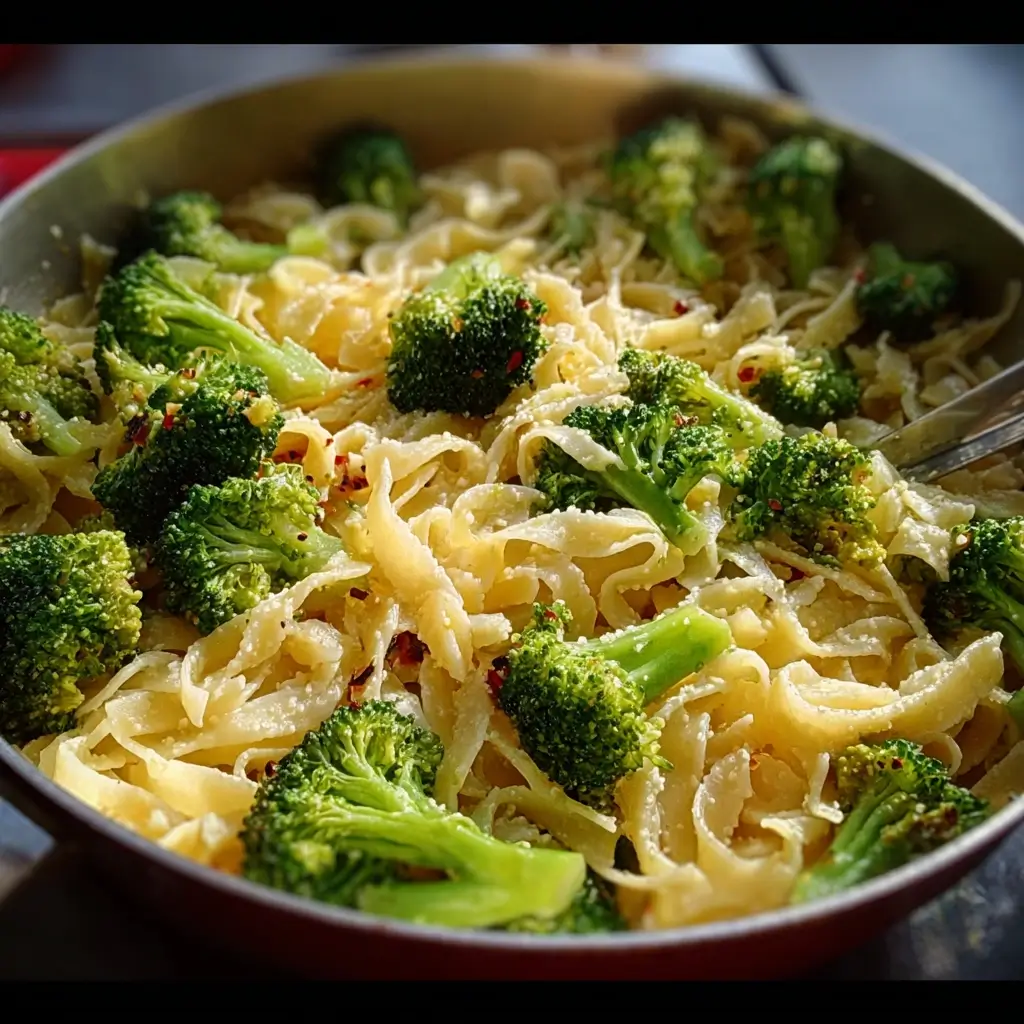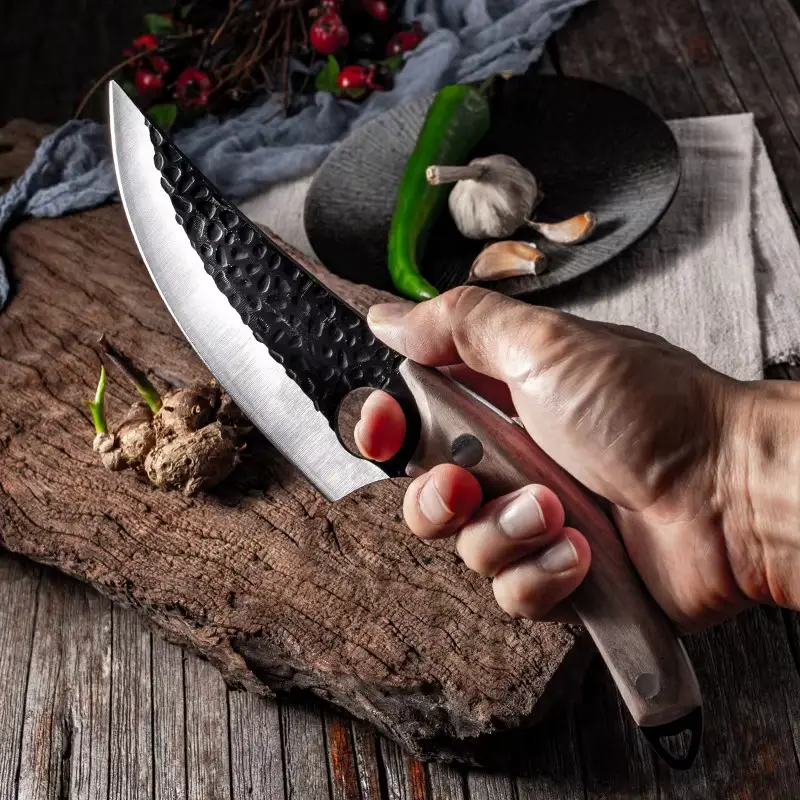Of all the recipes that have graced my kitchen over the years, some are flashy, some are complex, and some are reserved for special occasions. But then there are the true heroes: the humble, lightning-fast, and utterly delicious meals that save a chaotic weeknight. This Garlic Broccoli Noodles recipe is the undisputed champion of that category in my household. I remember the first time I made it. It was a Tuesday evening, the kind where everyone is tired, hungry, and a little bit grumpy. I had a head of broccoli that needed using, a pantry stocked with noodles, and about 20 minutes before a full-scale hunger meltdown. I threw this dish together, inspired by a craving for something savory, garlicky, and comforting. The aroma of garlic and sesame oil filled the kitchen, and suddenly, the mood lifted. When I served it, silence fell over the table—the kind of silence that only happens when a meal is a surprise hit. My kids, who often view green vegetables with suspicion, devoured the broccoli. My partner asked for seconds before I had even finished my own bowl. Since that day, “the good broccoli noodles” have become a weekly request, a celebrated staple that proves you don’t need hours of effort or a laundry list of fancy ingredients to create a meal that feels like a warm hug in a bowl. It’s my secret weapon for a satisfying, feel-good dinner that brings everyone to the table, happy and full.
Why You’ll Fall in Love with This Garlic Broccoli Noodles Recipe
Before we dive into the nuts and bolts, let’s talk about why this recipe will inevitably become a favorite in your cooking rotation. It’s more than just a meal; it’s a solution to the modern-day dinner dilemma.
- Unbelievably Fast: From the moment you start chopping to the moment you’re serving, this dish can be on your table in under 20 minutes. It’s the perfect answer to “What’s for dinner?” on those busy nights when you’re tempted to order takeout. The broccoli steams while the noodles boil, making for a highly efficient cooking process.
- Minimal and Accessible Ingredients: There are no obscure items here that require a special trip to a gourmet store. This recipe is built on pantry and fridge staples like noodles, broccoli, garlic, and soy sauce. It’s budget-friendly and relies on the power of simple ingredients combined in the right way.
- A Flavor Powerhouse: Don’t let the simplicity fool you. The combination of freshly minced garlic, savory soy sauce, nutty toasted sesame oil, and a touch of sweetness creates an umami-rich sauce that is addictively delicious. The red pepper flakes add a gentle warmth that elevates the entire dish from simple to spectacular.
- Healthy and Wholesome: Packed with nutrient-rich broccoli and built around a simple, clean sauce, this is a meal you can feel good about serving. It’s a fantastic way to get a hearty dose of vegetables into your diet in a way that feels indulgent rather than obligatory.
- Endlessly Customizable: This recipe is a perfect canvas for your creativity. You can add different vegetables, throw in a protein source like shredded beef, chicken, or tofu, or adjust the spice level to your liking. It’s a foundational recipe that you can adapt to suit your tastes and what you have on hand.
Ingredients
The beauty of this recipe lies in its simplicity. Each component is chosen for maximum impact, creating a symphony of flavor with just a handful of items.
- Noodles (12 ounces / 340g): The foundation of our dish. While you can use almost any long noodle, ramen noodles or spaghetti work exceptionally well. Ramen provides a satisfying chewiness, while spaghetti offers a familiar and readily available alternative. Udon or soba noodles are also fantastic choices.
- Broccoli (1 large head, about 1 lb / 450g): This is our star vegetable. Look for a head with tight, dark green florets and a firm stalk. We’ll be using both the florets and the tender parts of the stem, ensuring no part of this nutritious vegetable goes to waste.
- Garlic (6-8 cloves): This is not a time for subtlety. We’re using a generous amount of fresh garlic to create the bold, aromatic backbone of our sauce. Please use fresh cloves for the best flavor; pre-minced jarred garlic or garlic powder won’t deliver the same pungent, vibrant taste.
- Low-Sodium Soy Sauce (1/4 cup / 60ml): The primary source of our savory, umami flavor. Using a low-sodium version allows you to control the saltiness of the final dish more effectively. If you only have regular soy sauce, you may want to start with a little less and adjust to taste. For a gluten-free option, use tamari.
- Toasted Sesame Oil (1 tablespoon): This is a finishing oil, not a cooking oil. Its deep, nutty, and fragrant aroma is essential for adding complexity and a distinctively Asian-inspired flavor profile to the sauce. A little goes a long way.
- Olive Oil or Avocado Oil (2 tablespoons): A neutral-tasting oil for sautéing the garlic. This is our cooking fat that will help us build the base layer of flavor without interfering with the other ingredients.
- Brown Sugar (1 tablespoon, packed): A crucial balancing element. The sweetness from the brown sugar cuts through the saltiness of the soy sauce, creating a perfectly harmonious and well-rounded sauce. You can substitute with honey or maple syrup if you prefer.
- Red Pepper Flakes (1/4 to 1/2 teaspoon): This is for a gentle hum of background heat. Adjust the amount based on your personal preference for spice. You can omit it entirely if you’re sensitive to heat or serving it to young children.
- Reserved Noodle Water (about 1/2 cup / 120ml): The secret ingredient! The starchy water left over from boiling the noodles is liquid gold. It helps the sauce emulsify and cling to every noodle and broccoli floret, creating a silky, cohesive dish instead of a dry or oily one.
Instructions
Follow these simple steps to create your delicious Garlic Broccoli Noodles. The key is to have all your ingredients prepped and ready to go (a concept known as mise en place), as the cooking process moves very quickly.
Step 1: Prepare the Noodles and Broccoli
Bring a large pot of salted water to a rolling boil. Add your chosen noodles and cook according to the package directions, but aim for al dente (still with a slight bite), as they will cook a little more in the sauce. In the last 2-3 minutes of the noodle cooking time, add the chopped broccoli florets directly to the pot with the noodles. This technique, known as blanching, will cook the broccoli to a perfect, vibrant green, tender-crisp texture while saving you from using an extra pot. Before draining, carefully scoop out and reserve about 1 cup of the starchy cooking water. Drain the noodles and broccoli and set them aside.
Step 2: Create the Garlic Sauce Base
While the noodles are cooking, you can begin the sauce. Place a large skillet or wok over medium heat. Add the olive oil (or avocado oil). Once the oil is shimmering, add the freshly minced garlic. Sauté for about 30-60 seconds, stirring constantly, until the garlic is fragrant and just beginning to turn a light golden color. Be very careful not to burn the garlic, as it will become bitter and ruin the sauce. The goal is to toast it gently to release its aromatic oils.
Step 3: Build the Sauce
Turn the heat down to low to prevent the garlic from burning. Immediately pour in the low-sodium soy sauce, toasted sesame oil, and brown sugar. Add the red pepper flakes, if using. Whisk everything together continuously until the brown sugar has completely dissolved and the sauce is well combined. Let it simmer gently for about a minute to allow the flavors to meld together.
Step 4: Combine Everything
Add the drained noodles and broccoli to the skillet with the sauce. Pour in about 1/4 cup of the reserved starchy noodle water. Using a pair of tongs, toss everything together gently but thoroughly, ensuring every strand of noodle and piece of broccoli is coated in the glossy sauce. If the sauce seems too thick, add another splash of the reserved noodle water until it reaches your desired consistency. The starch in the water will help the sauce cling beautifully to the noodles.
Step 5: Serve Immediately
Continue to toss for another minute over low heat until the dish is heated through. Taste and adjust seasoning if necessary—you might want a little more soy sauce for saltiness or a pinch more red pepper for heat. Serve the noodles hot, straight from the skillet, garnished with your favorite toppings.
Nutrition Facts
This recipe is designed to be a balanced and satisfying meal. The following nutritional information is an approximation and can vary based on the specific ingredients and portion sizes you use.
- Servings: 4
- Calories per Serving: Approximately 450 kcal
- Carbohydrates: As the primary energy source, the noodles provide complex carbohydrates to fuel your body and keep you feeling full and satisfied.
- Protein: This dish offers a moderate amount of plant-based protein from the noodles and broccoli, essential for muscle repair and overall bodily function.
- Fiber: Broccoli is an excellent source of dietary fiber, which is crucial for digestive health, regulating blood sugar levels, and promoting a feeling of fullness.
- Vitamin C: Broccoli is a powerhouse of Vitamin C, a vital antioxidant that supports the immune system and skin health. Just one serving of this dish provides a significant portion of your daily needs.
- Sodium: By using low-sodium soy sauce, we keep the sodium content in check. However, be mindful of this if you are on a strict low-sodium diet.
Preparation Time
This recipe is the definition of a quick and easy weeknight meal.
- Prep Time: 5-7 minutes. This includes washing and chopping the broccoli and mincing the garlic. You can do this while the pot of water is coming to a boil.
- Cook Time: 10-12 minutes. This is the time it takes to boil the noodles, blanch the broccoli, and whip up the quick pan sauce.
- Total Time: Under 20 minutes. A complete, delicious, and satisfying meal on the table in less time than it takes to decide on and order takeout.
How to Serve
While delicious on its own, this Garlic Broccoli Noodle dish can be elevated with a few simple additions and serving suggestions.
- Garnish Generously: Toppings add texture, flavor, and visual appeal.
- Toasted Sesame Seeds: Adds a nutty crunch.
- Sliced Green Onions or Chives: Provides a fresh, mild oniony bite.
- Chopped Peanuts or Cashews: For an extra layer of crunch and richness.
- A Squeeze of Fresh Lime Juice: Brightens up all the flavors and adds a touch of acidity.
- A Drizzle of Sriracha or Chili Garlic Sauce: For those who crave an extra kick of spice.
- Pair with a Simple Side: To round out the meal, consider serving it with:
- A crisp Asian cucumber salad.
- Steamed edamame sprinkled with sea salt.
- Simple store-bought or homemade spring rolls or dumplings.
- A light and warming bowl of miso soup.
- Serve as a Base for Protein: These noodles make a fantastic foundation for a heartier meal.
- Top with grilled chicken strips, pan-seared shrimp, or thinly sliced sautéed beef.
- For a vegetarian option, add crispy pan-fried tofu, tempeh, or a handful of edamame.
Additional Tips
Here are eight extra tips to help you perfect this recipe and make it your own.
- Don’t Overcook the Broccoli: The goal is tender-crisp, not mushy. Adding it to the boiling noodle water for the last 2-3 minutes is the perfect amount of time to cook it while retaining a slight bite and its vibrant green color. If you prefer softer broccoli, you can add it a minute earlier.
- Master the Garlic: The key to the sauce is fragrant, not burnt, garlic. Keep the heat on medium and stir constantly. As soon as you can smell it strongly and see the edges turning a pale gold, it’s time to add the liquids. This happens fast, so don’t walk away from the pan!
- The Magic of Starchy Water: Never underestimate the power of the reserved noodle water. It’s the emulsifier that brings the oil-based sauce and the noodles together into one cohesive, silky dish. Start with 1/4 cup and add more, a tablespoon at a time, until the sauce is glossy and clings perfectly to the noodles.
- Make it Creamy: For a richer, creamier version of this dish, stir in a tablespoon of peanut butter or tahini into the sauce along with the soy sauce. It will create a more decadent, satay-style noodle dish that is incredibly satisfying.
- Veggie Variations: This recipe is a great way to clean out your vegetable drawer. Feel free to add or substitute other quick-cooking vegetables. Sliced bell peppers, mushrooms, snap peas, shredded carrots, or baby spinach would all be delicious additions. Sauté heartier vegetables with the garlic before adding the sauce.
- Meal Prep Like a Pro: This dish is great for meal prep. You can cook the noodles and broccoli ahead of time and store them in an airtight container in the fridge. The sauce can also be mixed and stored separately. When you’re ready to eat, simply heat the sauce in a skillet, add the noodles and broccoli, and toss to combine.
- Control the Sweetness and Saltiness: Taste your sauce before adding the noodles. Everyone’s palate is different. If you prefer it less sweet, start with half the brown sugar. If you are sensitive to salt, use a bit less soy sauce. It’s always easier to add more later than it is to take it away.
- Use the Broccoli Stems: Don’t throw away the broccoli stems! Peel the tough outer layer with a vegetable peeler, and thinly slice the tender interior. The stems are just as nutritious and delicious as the florets. You can add them to the boiling water along with the florets; they just might need an extra minute of cooking time.
Frequently Asked Questions (FAQ)
1. Can I use frozen broccoli for this recipe?
Absolutely! Frozen broccoli is a convenient and perfectly acceptable alternative. There’s no need to thaw it first. You can add the frozen florets directly to the boiling noodle water, but they may need an extra minute or two of cooking time compared to fresh broccoli.
2. What are the best noodles to use?
This recipe is very forgiving. The best noodles are the ones you have and love! Instant ramen noodles (discard the seasoning packet), spaghetti, linguine, udon, and soba noodles are all excellent choices. For a gluten-free version, use rice noodles or your favorite gluten-free spaghetti.
3. How can I make this recipe gluten-free?
It’s very simple to make this dish gluten-free. First, use a gluten-free noodle variety like rice noodles or any certified GF pasta. Second, substitute the soy sauce with an equal amount of tamari or coconut aminos, which are both fantastic gluten-free alternatives.
4. How do I store and reheat leftovers?
Store any leftovers in an airtight container in the refrigerator for up to 3-4 days. To reheat, you can microwave it in 30-second intervals until warm. For the best results, reheat it in a skillet over medium-low heat. You may need to add a splash of water or a little more soy sauce to loosen up the noodles and refresh the sauce as it can get absorbed overnight.
5. Can I make this recipe vegan?
Yes, this recipe is easily made vegan. Most of the core ingredients are already plant-based. The only things you need to check are your noodles (some egg noodles contain egg) and your sweetener. Ensure you use a vegan noodle variety and opt for brown sugar or maple syrup instead of honey.
6. How can I add more protein to this dish?
This recipe is a great base for protein. For a quick addition, top with pan-seared shrimp, shredded rotisserie chicken, or thinly sliced beef. For plant-based options, add crispy pan-fried tofu cubes, tempeh, or a cup of shelled edamame (you can boil it along with the noodles and broccoli).
7. My sauce seems too thin or too thick. How do I fix it?
This is easily adjustable. If your sauce seems too thin, let it simmer for another minute or two in the pan; it will reduce and thicken slightly. If it’s too thick, simply stir in more of the reserved starchy noodle water, one tablespoon at a time, until it reaches the perfect consistency.
8. Is this recipe kid-friendly?
This recipe is a huge hit with kids! The sweet and savory sauce is very appealing to younger palates and is a great way to introduce them to broccoli. If your children are sensitive to spice, you can simply omit the red pepper flakes or serve them on the side for the adults to add to their own bowls.






